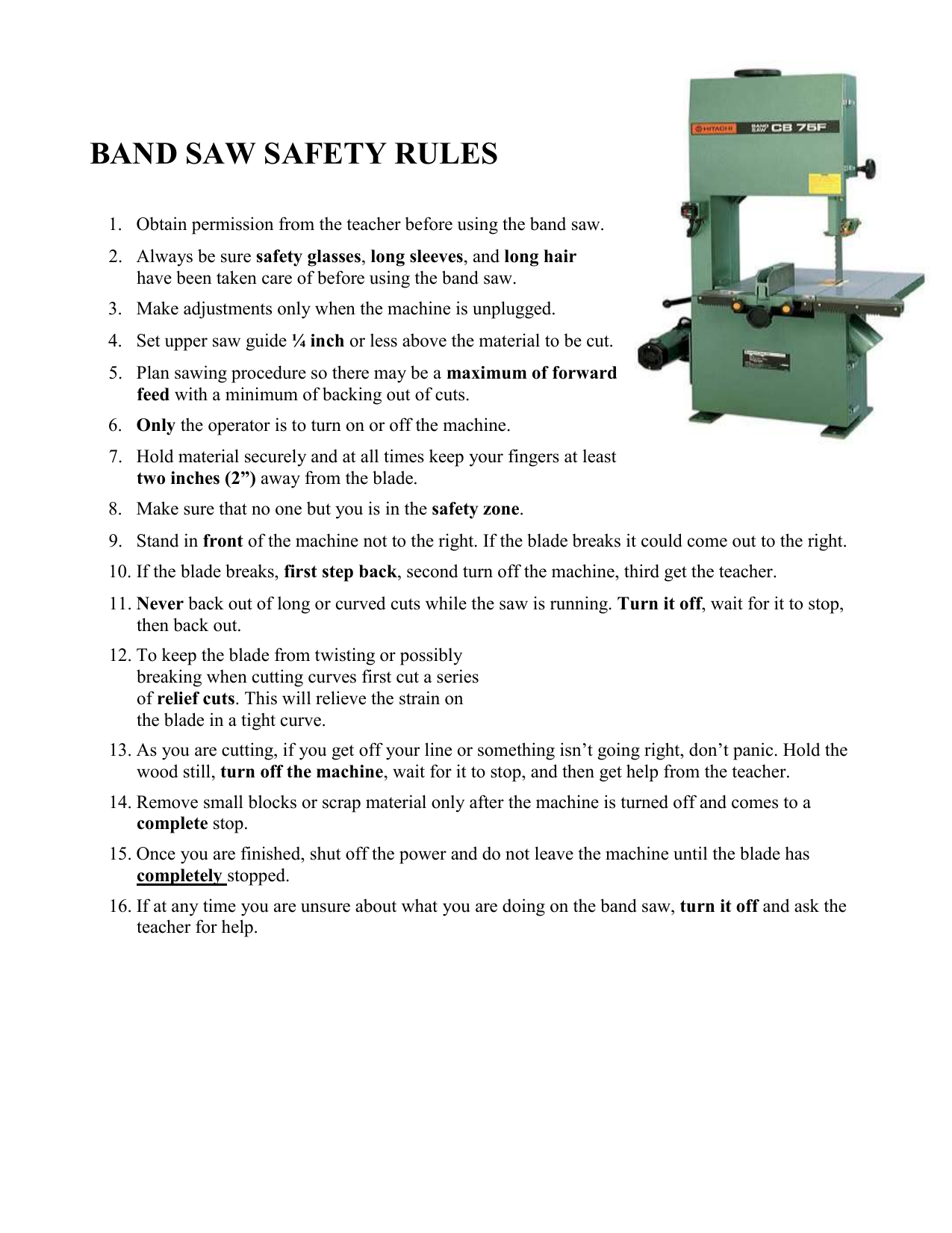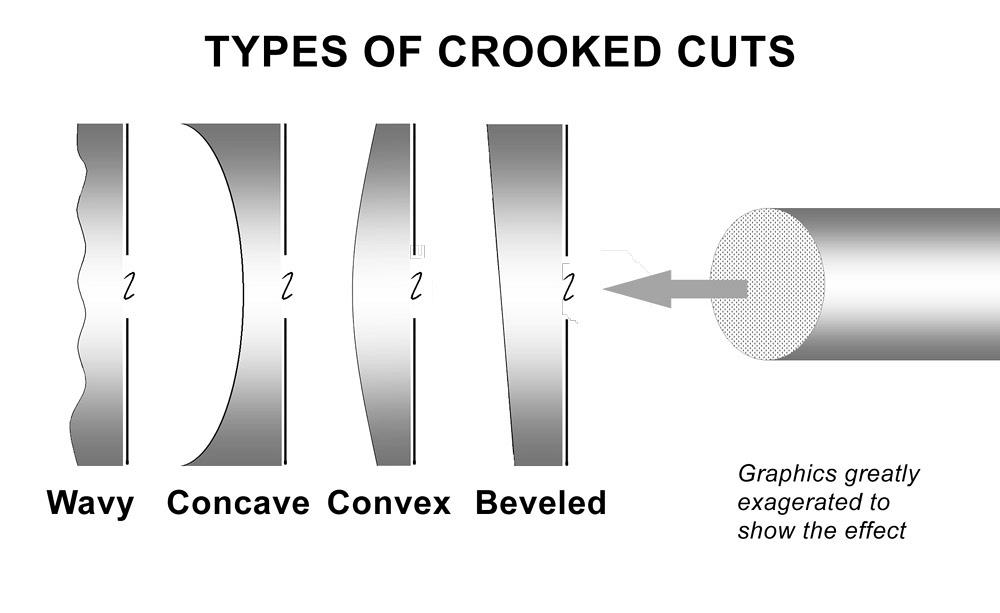Picture this: you’re in a workshop, surrounded by tools and projects. You spot a bandsaw, a powerful tool used for cutting various materials. But wait, before you put anything on that bandsaw, there are a couple of things you need to know. It’s crucial to understand what should never, ever be cut on a bandsaw. Wondering what those forbidden items are? Keep reading to find out!
When it comes to bandsaw safety, there are two things that you should never feed into this mighty cutting machine. Cutting them on the bandsaw could lead to disastrous consequences. So, without further ado, let’s uncover these forbidden items and explore why they shouldn’t be cut on a bandsaw.
Safety is of utmost importance in any workshop, and knowing what to avoid when using a bandsaw is essential for your well-being. So, let’s dive into this topic, keep ourselves safe, and unleash the power of the bandsaw!

What 2 Things are Forbidden to Be Cut on the Bandsaw?
A bandsaw is a versatile power tool commonly used in woodworking and metalworking. It features a sharp, continuous blade stretched between two wheels, which allows for precise cutting of various materials. However, there are certain things that should not be cut on a bandsaw to ensure safety and maintain the integrity of the tool. In this article, we will explore two important items that are forbidden to be cut on a bandsaw and the reasons behind these restrictions.
The Forbidden Items: Fingers and Metal
One of the most crucial safety rules when operating a bandsaw is to keep your fingers away from the blade. A bandsaw blade is exceptionally sharp and can cause severe injuries if it comes into contact with bare skin. Therefore, it is absolutely forbidden to attempt cutting anything with your fingers directly in the path of the blade. Cutting small pieces with your fingers dangerously close to the blade puts you at risk of losing a finger or suffering other serious injuries.
Another item that is forbidden to be cut on a bandsaw is metal. Bandsaws are typically designed and optimized for cutting wood or certain types of soft materials. Attempting to cut metal on a bandsaw can damage the blade, cause it to dull quickly, or even break. The high friction generated when cutting through metal can also result in an increased risk of accidents, including the possibility of the metal piece being thrown from the machine. To cut metal efficiently and safely, it is recommended to use a dedicated metal-cutting bandsaw with an appropriate blade and cutting speed.
Why Are Fingers Dangerous on a Bandsaw?
The danger of cutting fingers on a bandsaw is a result of the speed and power of the blade. Bandsaw blades typically rotate at high speeds, allowing for efficient cutting through various materials. In case of accidental contact with the blade, fingers can be severed or seriously injured due to the velocity and sharpness of the blade. The blade’s thin profile increases the risk even further, as there is little room for error when working with it. Therefore, it is of utmost importance to keep fingers at a safe distance from the blade and use proper safety techniques when operating a bandsaw.
Bandsaws are equipped with safety features such as blade guards and blade tensioners that need to be appropriately adjusted and maintained to ensure safe operation. Additionally, using appropriate push sticks or other accessories for guiding the material through the blade can greatly reduce the risk of accidental contact with the blade. Always remember to prioritize safety and take necessary precautions to protect yourself and others when using a bandsaw.
Why Shouldn’t Metal be Cut on a Bandsaw?
Attempting to cut metal on a bandsaw that is primarily designed for cutting wood can have detrimental effects on both the blade and the machine itself. Bandsaw blades designed for cutting wood typically have a higher tooth count and different tooth geometry than those specifically made for cutting metal. These differences help optimize cutting efficiency and prevent damage to the blade.
Cutting metal material with the wrong type of bandsaw blade can quickly wear down the teeth, resulting in a dull blade that struggles to cut even through wood effectively. Moreover, the high friction generated when cutting metal can wear down the blade even faster and potentially cause it to break, leading to potential accidents or injuries. Additionally, metal chips and shavings produced during the cutting process can interfere with the operation of the bandsaw, further compromising its functionality and safety.
Additional Safety Precautions for Bandsaw Operation
While we have discussed the two main items that are forbidden to be cut on a bandsaw, it is essential to highlight some additional safety precautions when operating this power tool:
1. Wear appropriate safety gear:
Always wear safety glasses or goggles to protect your eyes from potential debris. Additionally, consider wearing hearing protection and fitted clothing to avoid any loose material getting caught in the machinery.
2. Keep the workspace clean:
Removing clutter, scrap materials, and debris from the working area around the bandsaw can help prevent accidents and ensure smooth operation. A clean workspace allows you to move around freely and minimize the risk of tripping or stumbling.
3. Use a blade guard:
A blade guard is an essential safety feature on a bandsaw that covers the majority of the blade, except for the small portion necessary for cutting. It helps protect your hands from accidental contact with the blade and should always be properly adjusted and maintained.
4. Maintain the bandsaw properly:
Regularly check and maintain your bandsaw to ensure it is in optimal working condition. Lubricate the moving parts, keep the blade tension correctly set, and replace dull or damaged blades promptly to prevent accidents and maintain cutting efficiency.
5. Seek professional training:
If you are a beginner or unfamiliar with operating a bandsaw, consider seeking professional training or guidance. Understanding the proper techniques and safety protocols can significantly reduce the risk of accidents and help you make the most of this powerful tool.
Conclusion
A bandsaw is a valuable tool that enables precise cutting in various materials, but it comes with specific limitations and safety considerations. Fingers should never come into contact with the blade, and cutting metal on a bandsaw can cause damage to the blade and compromise safety. Adhering to these restrictions and following additional safety precautions will help ensure your safety and the longevity of your bandsaw. Remember, safety should always be the priority when operating any power tool, and bandsaws are no exception.
Key Takeaways: What 2 Things are Forbidden to be Cut on the Bandsaw?
- Never cut metal on the bandsaw as it can damage the blade and cause serious accidents.
- Avoid cutting small or irregularly shaped objects on the bandsaw as they may get caught in the blade and cause kickback.
- Always use appropriate safety measures and protective gear when using the bandsaw.
- Respect the bandsaw’s limitations and avoid cutting materials that exceed its capacity.
- Regularly maintain and inspect the bandsaw to ensure it is in safe operating condition.
Frequently Asked Questions
Are you curious about what items should never be cut on a bandsaw? Check out these commonly asked questions and answers to learn more!
What are the two things that are forbidden to be cut on the bandsaw?
When using a bandsaw, there are two things that should never be cut:
The first is your fingers or any body part. It’s crucial to always keep your hands and body a safe distance away from the blade. Using push sticks or other tools designed for the purpose can help maintain a safe distance between your hands and the blade. Accidents can happen quickly, so it’s essential to exercise caution and follow proper safety guidelines when working with a bandsaw.
The second thing that should never be cut on a bandsaw is metals such as nails, screws, or other metal objects. While a bandsaw is designed to cut wood and other soft materials, it is not suitable for cutting metal. Attempting to cut metal on a bandsaw can damage the blade, cause the metal to become hot and potentially cause sparks, and even pose a risk for kickback or other accidents. It’s best to use the appropriate tools and techniques for cutting metal.
Why is it dangerous to cut fingers on the bandsaw?
The bandsaw blade on a bandsaw is incredibly sharp and moves at high speed, making it extremely dangerous to cut fingers or any other body part. The blade can cut through flesh and bone with ease, causing severe injuries or even amputations. Additionally, the bandsaw blade has a continuous loop, and once a finger or body part comes into contact with it, it can quickly pull the hand or body towards the blade, leading to further damage. The high speed of the blade also means that accidents can happen in an instant, leaving very little time for reaction or prevention.
To ensure your safety, always keep your hands a safe distance away from the blade and use appropriate techniques and tools such as push sticks or jigs to guide the material being cut. It’s also essential to wear appropriate protective gear, including safety goggles and gloves, to minimize the risk of injury. Remember, accidents on a bandsaw can have severe consequences, so it’s crucial to prioritize safety at all times.
What can happen if metal objects are cut on a bandsaw?
If you attempt to cut metal objects such as nails or screws on a bandsaw, several dangers can arise:
Firstly, the bandsaw blade is designed and optimized for cutting softer materials like wood. When cutting metal, the blade can become damaged or dulled quickly, reducing its cutting efficiency and potentially causing a poor quality cut. Additionally, metal objects can produce a lot of heat when being cut, which can affect the blade’s performance and potentially leading to blade breakage or deformation.
Secondly, cutting metal on a bandsaw can also produce sparks, especially if the blade strikes metal at a high speed. These sparks can pose a fire hazard, especially if they come into contact with flammable objects or materials.
Lastly, cutting metal on a bandsaw can increase the risk of kickback, where the material being cut is forcefully thrown backward towards the operator. This can be extremely dangerous and cause injury. It’s best to use appropriate tools such as a metal-cutting bandsaw or other metal-cutting tools when working with metals.

Summary
There are two things that you should never cut on a bandsaw. The first is your fingers, as the bandsaw blade is very sharp and can cause serious injuries. Always be cautious and keep your fingers away from the blade. The second thing to avoid cutting on a bandsaw is metal, as the blade is designed for cutting wood and may get damaged or break if used on metal. Stick to cutting wood on the bandsaw to ensure both your safety and the longevity of the blade.
source https://thehabitofwoodworking.com/2023/what-2-things-are-forbidden-to-be-cut-on-the-bandsaw/

No comments:
Post a Comment